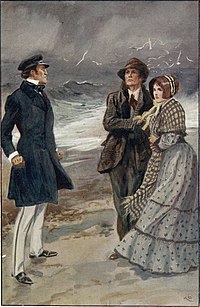Adaptations
The White Circle , a silent film, was released in 1920, starring Spottiswoode Aitken as Bernard Huddlestone, Janice Wilson as Clara Huddlestone, Harry Northrup as Northmour, and John Gilbert as Frank Cassilis.
State of Siege, episode 16 of season 4 of the TV series Maverick , borrows the actual siege and the host engaged to the daughter of the wanted man, but little else of the story, which it re-situates in the New Mexico Territory as a dispute between Spanish landowners. [5]
The Pavilion, a direct-to-video release, came out in 1999, starring Craig Sheffer as Frank Cassilis, Patsy Kensit as Clara Huddlestone, Richard Chamberlain as Huddlestone, and Daniel Riordan as Northmour.

Robert Louis Stevenson was a Scottish novelist, essayist, poet and travel writer. He is best known for works such as Treasure Island, Strange Case of Dr Jekyll and Mr Hyde, Kidnapped and A Child's Garden of Verses.

Abū Jaʿfar Hārūn ibn Muḥammad ar-Rāshīd, or simply Hārūn ibn al-Mahdī, famously known as Hārūn ar-Rāshīd, was the fifth Abbasid caliph of the Abbasid Caliphate, reigning from September 786 until his death in March 809. His reign is traditionally regarded to be the beginning of the Islamic Golden Age. His epithet al-Rashid translates to "the Orthodox", "the Just", "the Upright", or "the Rightly-Guided".
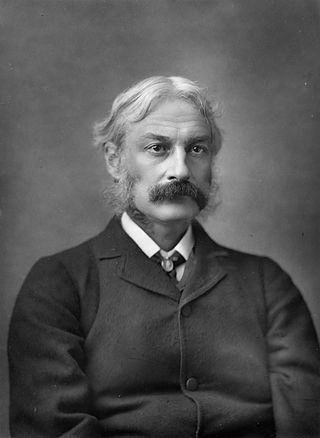
Andrew Lang was a Scottish poet, novelist, literary critic, and contributor to the field of anthropology. He is best known as a collector of folk and fairy tales. The Andrew Lang lectures at the University of St Andrews are named after him.

James Payn was an English novelist and editor. Among the periodicals he edited were Chambers's Journal in Edinburgh and the Cornhill Magazine in London.
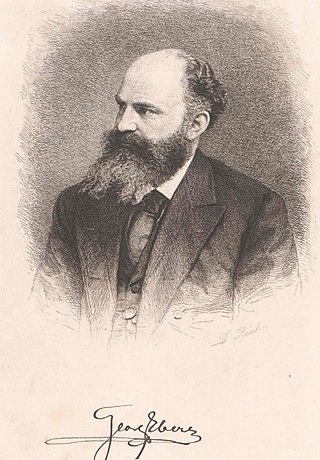
Georg Moritz Ebers was a German Egyptologist and novelist. He is best known for his purchase of the Ebers Papyrus, one of the oldest Egyptian medical documents in the world.
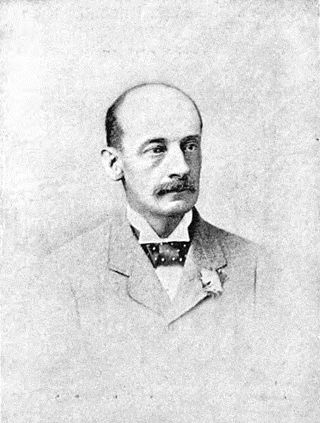
William Edward Norris was a London-born English fiction and writer. His first story, Heap of Money, appeared in 1877, and was followed by a long series of novels and stories, many of which first appeared in the Temple Bar and Cornhill magazines.

"Beauty and the Beast" is a fairy-tale written by French novelist Gabrielle-Suzanne Barbot de Villeneuve and published in 1740 in La Jeune Américaine et les contes marins.
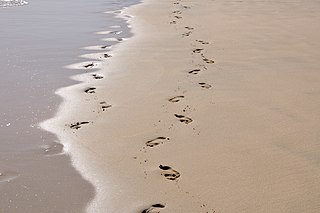
"Footprints," also known as "Footprints in the Sand," is a popular modern allegorical Christian poem. It describes a person who sees two pairs of footprints in the sand, one of which belonged to God and another to themselves. At some points the two pairs of footprints dwindle to one; it is explained that this is where God carried the protagonist.
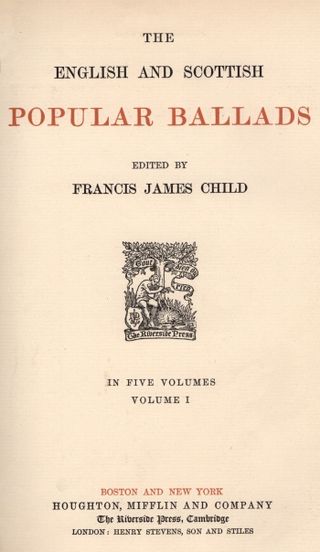
"The Raggle Taggle Gypsy" (Roud 1, Child 200), is a traditional folk song that originated as a Scottish border ballad, and has been popular throughout Britain, Ireland and North America. It concerns a rich lady who runs off to join the gypsies (or one gypsy). Common alternative names are "Gypsy Davy", "The Raggle Taggle Gypsies O", "The Gypsy Laddie(s)", "Black Jack David" (or "Davy") and "Seven Yellow Gypsies".

George Fyler Townsend (1814–1900) was the British translator of the standard English edition of Aesop's Fables.
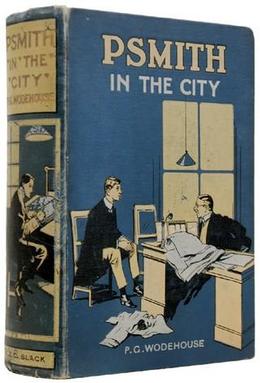
Psmith in the City is a novel by P. G. Wodehouse, first published on 23 September 1910 by Adam & Charles Black, London. The story was originally released as a serial in The Captain magazine, between October 1908 and March 1909, under the title The New Fold.

Frances Matilda Van de Grift Osbourne Stevenson was an American magazine writer. She became a supporter and later the wife of Robert Louis Stevenson, and the mother of Isobel Osbourne, Samuel Lloyd Osbourne, and Hervey Stewart Osbourne.

New Arabian Nights by Robert Louis Stevenson, first published in 1882, is a collection of short stories previously published in magazines between 1877 and 1880. The collection contains Stevenson's first published fiction, and a few of the stories are considered by some critics to be his best work, as well as pioneering works in the English-language short story tradition.

More New Arabian Nights: The Dynamiter (1885) is a collection of linked short stories by Robert Louis Stevenson and Fanny van de Grift Stevenson.

Aladdin: Original Motion Picture Soundtrack is the soundtrack for the 1992 Disney animated film Aladdin. The album was released by Walt Disney Records on CD and cassette tape on October 27, 1992. The soundtrack was intertwined with demos, work tapes and unreleased masters, as well as original scores in 1994 in a four-disc box set entitled The Music Behind the Magic: The Musical Artistry of Alan Menken, Howard Ashman & Tim Rice. A remastered reissue with altered lyrics and new artwork was released on March 27, 2001. A special edition reissue featuring two previously released demos and new artwork was released on September 28, 2004. The Legacy Collection: Aladdin was released on September 9, 2022, to coincide with the 30th anniversary of Aladdin.

The Suicide Club is an 1878 collection of three 19th century detective fiction short stories by Robert Louis Stevenson that combine to form a single narrative. First published in the London Magazine in 1878, they were collected and republished in the first volume of the New Arabian Nights.
The (Bonnie) Rantin' Laddie or Lord Aboyne is a traditional Scottish folk ballad telling of the valiant rescue of his lover by a noble Highland lord.

The White Circle is a lost 1920 American silent adventure drama film directed by Maurice Tourneur and written by John Gilbert and Jules Furthman. The film stars Spottiswoode Aitken, Janice Wilson, Harry Northrup, John Gilbert, Wesley Barry, and Jack McDonald. It is based on the short story "The Pavilion on the Links" by Robert Louis Stevenson. The film was released on August 22, 1920, by Paramount Pictures.

The Sisters who Envied Their Cadette is a fairy tale collected by French orientalist Antoine Galland and published in his translation of The Arabian Nights, a compilation of Arabic and Persian fairy tales.
